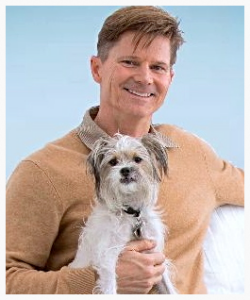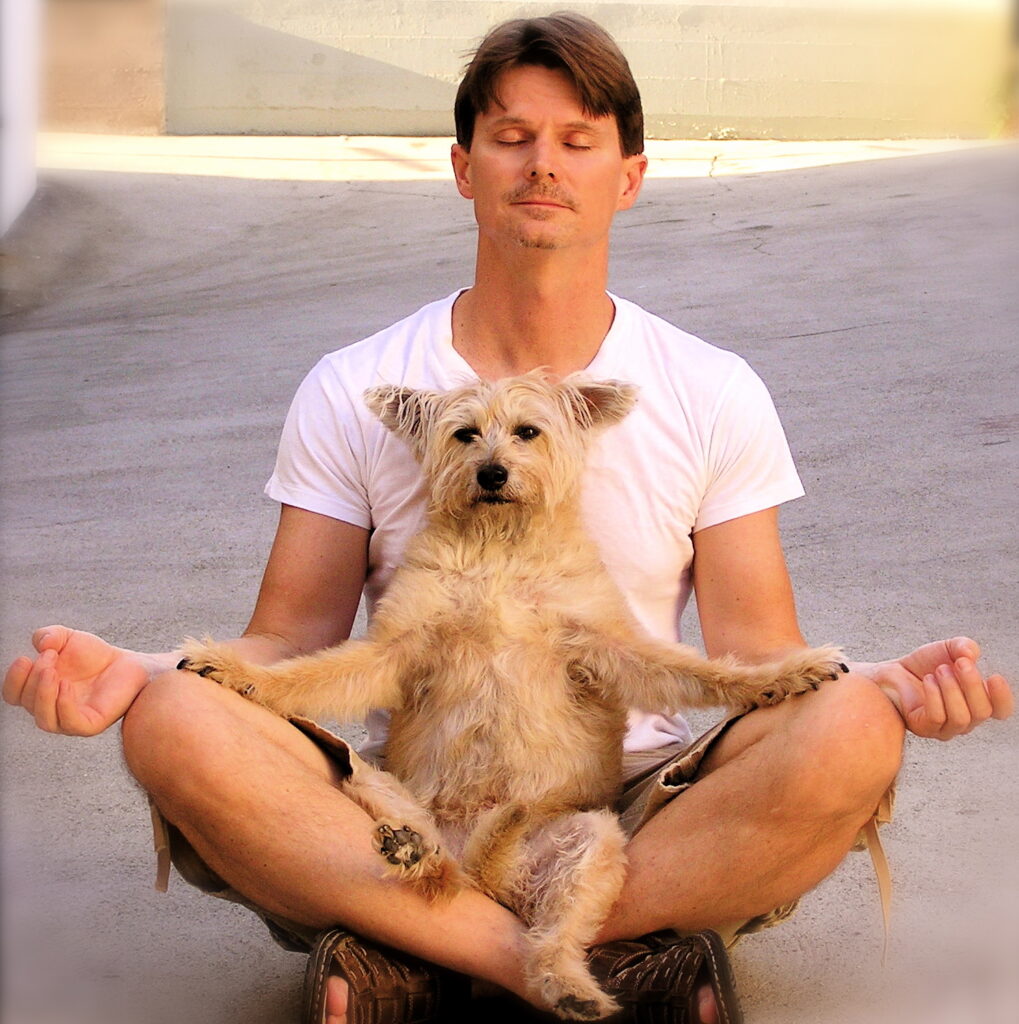How to Heal With the Help of Your Dog?
Heal with the Help of your Dog: Does this sound odd to you? I’ve spent nearly two decades counseling others through emotional and situational issues. I happen to do this with a little help from my (furry) friends. Ludicrous? I assure you, it isn’t.
I’m a Board Certified Behavioral Scientist. In my profession, the goings-on of psychotherapy tend to stay behind closed doors – but I’m bending tradition below for an important reason: What I’ve stumbled upon has not only changed my life but also positively impacted countless others – and you should know about it.
Here’s the story I’ve been waiting years to tell:
It’s 1997, I’m on the threshold of my career, and I move to Long Beach, California to work at a private psychotherapy practice. As a step into full-fledged adulthood, I rent a craftsman-style bungalow with a white picket fence. I want to start a family, but, with no dating prospects in sight, (grad school demanded my full-attention) I decided to rescue a little stray dog for company.
I name the pup “Joe Bruin” after my alma mater’s mascot but, as I introduce him around, peoples’ reactions inspire a more fitting moniker: “What a sweet boy” they’d coo. Joe’s loving personality fittingly trumped my school allegiance: “Joe Bruin” became “Joey Sweetboy.” In retrospect, this impromptu name-change foreshadowed how small surprises would lead to big discoveries.
One of my first assignments at The Center for Psychotherapy involved a couple (for confidentiality reasons, I’m renaming them). Barely in their 20’s and unmarried, Kayla and Kevin were parents to one toddler and had another baby on the way. Sadly, their first-born had birth defects, which led to Kevin’s mother taking custody. Grief, however, was not the couple’s presenting issue: Law enforcement, having intervened, had court ordered their therapy – The couple needed tools to better manage anger.
What unfolded in the initial sessions were Reality Show circumstances long before programmers deemed such unhealthy behavior “entertainment.” Kevin was cheating on Kayla. Pregnant Kayla, in turn, was punishing Kevin for his indiscretions by smoking two packs of cigarettes a day and not eating. Her strategy: “I’ll hurt me (and our unborn baby) to get back at you.” Kevin would occasionally hit Kayla, and then order her to sleep on their bedroom’s floor.
Despite this, they continued tightening the bonds that held them. Kevin and Kayla’s relationship presented a jumble of circumstances that would be challenging for any relationship counselor to untangle: My stomach would churn every Wednesday knowing this couple was heading my direction.
One Tuesday night, after an extremely long day at the practice, I arrived home to a landlord-posted notice: My place was being fumigated the next morning. The appointment had slipped my mind and it was too late to call and cancel. I needed to figure out what to do with Joey – obviously, I couldn’t have him around all that poison.
The only viable option was to make tomorrow an impromptu “take your dog to work day.” – after all, I reasoned, Joey was a “sweet boy” and my clients would instantly take to him: Then my gut rumbled with a realization – tomorrow was Wednesday.
Joey next to me, I apologized profusely to Kevin and Kayla the following morning. The couple nodded absently as they assumed their usual positions at each end of the opposing sofa for Round-one. Joey instinctually hopped up between them. I swallowed hard and asked if they minded Joey’s position – again, absent head-bobs. The session continued without incident: no verbal jabs and no raised voices – we were able to focus on relationship counseling instead of fighting.
Session completed, I exhaled and gave Joey a pat – silently congratulating myself for a job well done. I turned my attention to next week’s session: I became excited at the prospect of settling into the classic psychotherapy I was trained to impart. I begin envisioning Kevin vowing to be a better man and Kayla going from grimace to grin as they both set down their emotional rivalries.
Where’s the dog?
The following Wednesday Kayla and Kevin sauntered into session and glanced around: Where’s the dog they asked. I paused; perplexed.
In retrospect, my confused silence represented “the calm before the storm.” The ensuing session brewed into a hurricane hate-fest: accusations shouted, profane gesturing – and the wielding of scissors. Yep: the availability of my desk scissors became an opportunity for Kayla, fire in her eyes, to grab the dramatic spotlight.
After talking Kayla down and ending the session in stern, boundary-setting terms, I sank into my chair with a sigh: I struggled, flashing between last week’s and this week’s session: What went wrong? – And then I remember the couple’s comment…
I flashed on Kayla smiling at Kevin as he patted Joey’s head the week before. I remembered how they had both shared Joey’s good graces throughout the session – Joey was the buffer that had kept the couple’s emotions in check! I chuckled, reprimanding my ego: Joey had accomplished, without words, what I had been trying to do for weeks: He had gotten Kayla and Kevin to set down the shouting and communicate in a cooperative way.
Dr. Dog
I decided to make Joey the guest star for the remainder of Kevin and Kayla’s sessions. I then began experimenting with Joey’s presence as a variable with other clients. Joey had a uniformly positive impact on all of them. I thought: wow – interesting! Joey’s presence somehow made the therapy room more comfortable and somehow set the stage for greater patient insight.
Now, please remember, I’m a real clinician: I use endorsed and effective techniques in my work. I was just investigating a way to apply these techniques using my dog – and I knew I was onto something big…
Over-thinking things
We as a species think too much. This gift is also our challenge: Because we have ample brain capacity, we tend to intellectualize life circumstances, and then throw our concocted conclusions at each other. This can result in all sorts of consequences because life often calls for cooperation and compromise.
Canines, however, cannot over-think: They lack the brainpower for abstract thought and, so, must rely on their instincts to survive. As a result, dogs use life’s unfolding circumstances to appropriately dictate their responses. My idea was to utilize canine’s less-complicated set of filters as an antidote to human projection.
I developed The Canine Cure using Joey, but now I have patient’s bringing their dogs into session, or (in certain instances) fostering dogs to work the program.
I’m teaching people how to use their pets to increase emotional awareness, and then these furry life coaches are accompanying their guardians home to reinforce the learning.
Why take a pill when a healthy life prescription can come in a friend?
Born out of one dog’s sweet demeanor and a set of extenuating circumstances, The Canine Cure uses a blend of psychological science and canine wisdom and has aided so many in meaningful ways.
We can heal with the help of our dogs – Sometimes the answer to life’s emotional challenges is wagging right under our noses.


